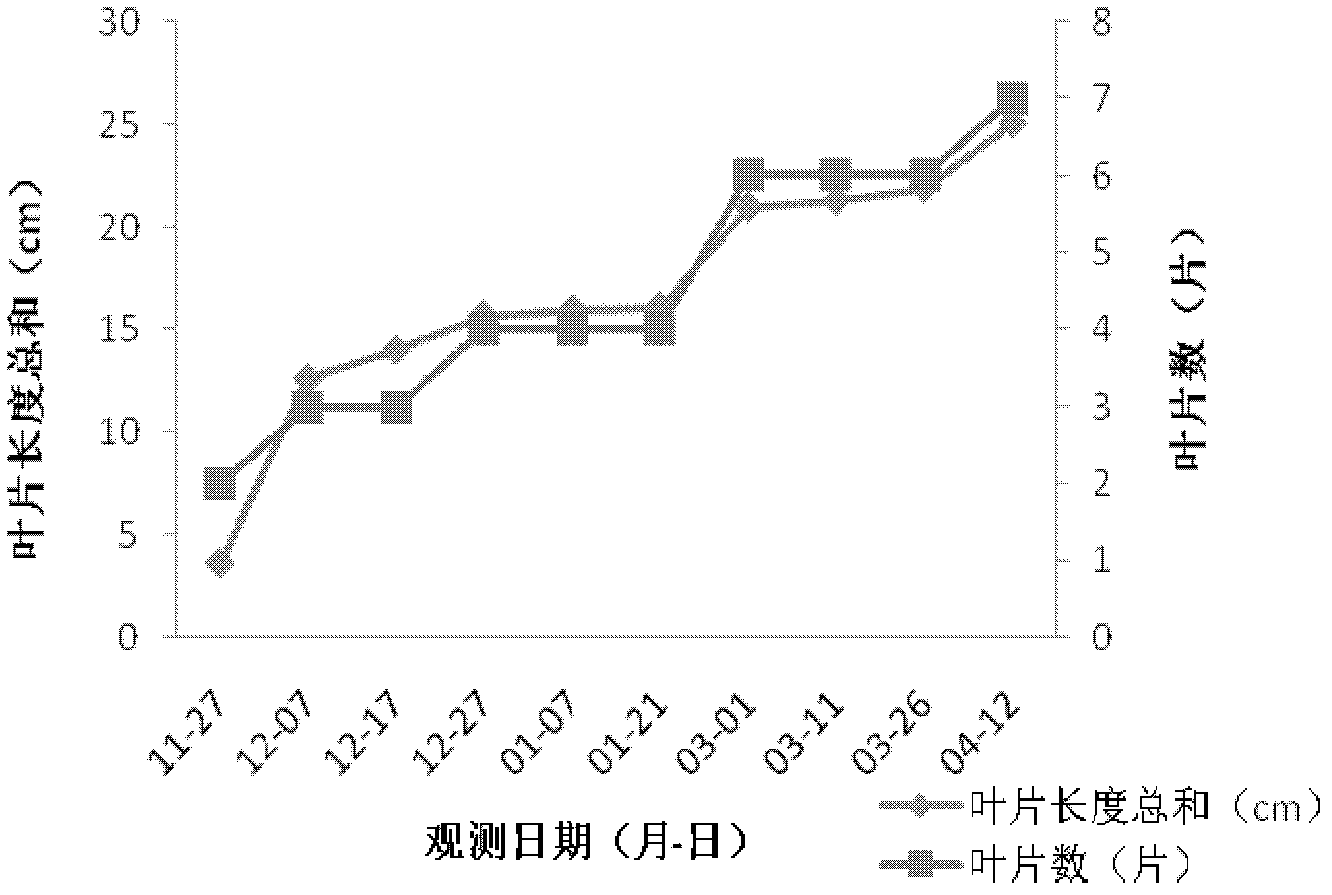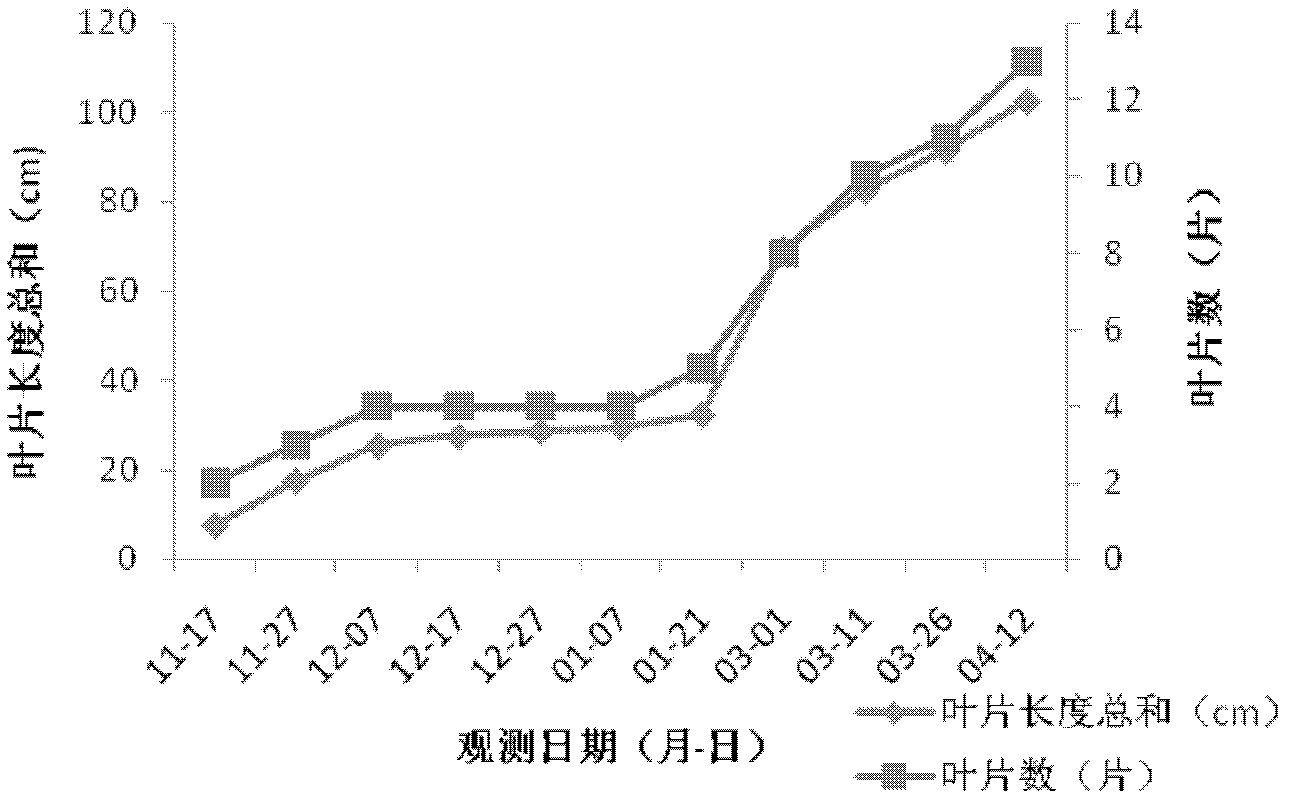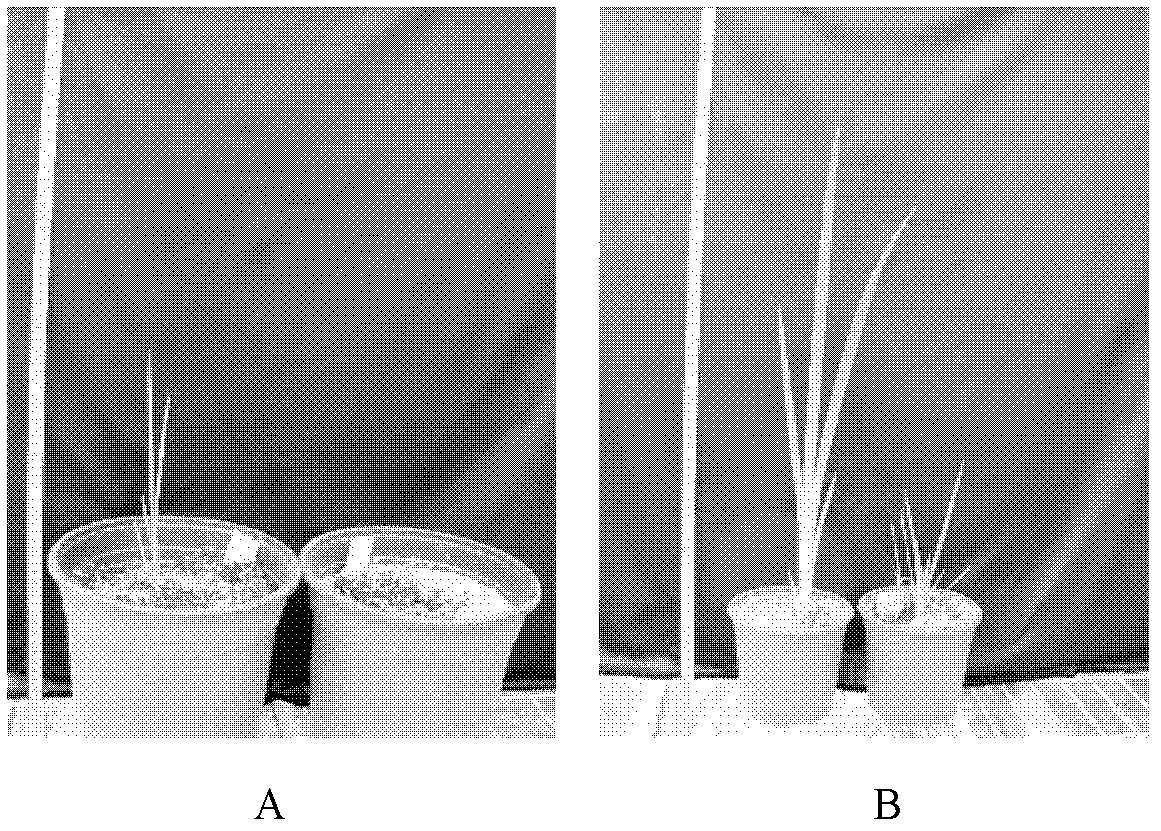Application of LED (Light Emitting Diode) in plant cultivation
A technology for LED lamps and plants, applied in greenhouse cultivation, botanical equipment and methods, parts and components of lighting devices, etc.
- Summary
- Abstract
- Description
- Claims
- Application Information
AI Technical Summary
Problems solved by technology
Method used
Image
Examples
Embodiment 1
[0023] Example 1: Iris LED light source promoted cultivation test
[0024] The growth of hybrid seedlings of Iris plants was observed, and it was found that most of the hybrid combinations basically stopped growing during the one-month period from late December to late January, and the leaves withered, shrank, and appeared dormancy. Take the two crosses of horse ♀×Siberian iris ‘Lichterfeldius’♂ and Tibet iris ♀×huang iris ♂ as examples.
[0025] The results of the experiment (Figure 1) show that the hybrid seedlings of the two hybrid combinations of horselin♀×Siberian iris'Lichterfeldius'♂ and Tibet iris ♀×huang iris ♂ entered a dormant state from December 27 to January 21. The growth basically stopped and did not resume growth until early March and new leaves were grown.
[0026] For seedlings that enter the dormant state, diodes (LED red: blue 7: 3) are used for light supplementation, the light intensity is 2500 lux, and the light supplement time is from 18:00 to 08:00 the next d...
Embodiment 2
[0027] Example 2 Hemerocallis LED light source promoted cultivation test
[0028] 1. Materials and methods
[0029] Using LED as the light source, the Hemerocallis seedlings in the greenhouse were tested from November 14, 2009 to February 14 of the following year. The light intensity was 2500 lux, and the light supplement time was from 18:00 to 08:00 the next day. Set up a control, repeat three times, randomly discharge the plant material under the light source, measure the number of leaves, plant height, flowering time and flowering number every 15 days to calculate the net growth.
[0030] 2. Results and analysis
[0031] The results of counting the number of leaves, leaf length, and leaf width of Hemerocallis and control respectively are shown in Table 1:
[0032] Table 1 Statistical results of the fill light treatment group
[0033]
[0034] It can be seen from the table that the increase in number of leaves, leaf length, and leaf width net growth after Hemerocallis treatment was si...
PUM
 Login to View More
Login to View More Abstract
Description
Claims
Application Information
 Login to View More
Login to View More - R&D
- Intellectual Property
- Life Sciences
- Materials
- Tech Scout
- Unparalleled Data Quality
- Higher Quality Content
- 60% Fewer Hallucinations
Browse by: Latest US Patents, China's latest patents, Technical Efficacy Thesaurus, Application Domain, Technology Topic, Popular Technical Reports.
© 2025 PatSnap. All rights reserved.Legal|Privacy policy|Modern Slavery Act Transparency Statement|Sitemap|About US| Contact US: help@patsnap.com



